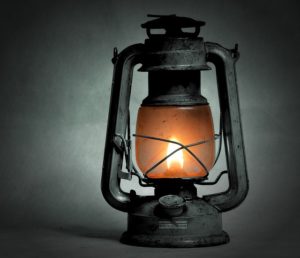 Retail lighting may not be something the average customer actively pays attention to, but it’s one of the first things they’ll notice about the atmosphere when it’s off. In fact, it’s this same effect on a retail space’s atmosphere that can be the difference between satisfied and dissatisfied customers.
Retail lighting may not be something the average customer actively pays attention to, but it’s one of the first things they’ll notice about the atmosphere when it’s off. In fact, it’s this same effect on a retail space’s atmosphere that can be the difference between satisfied and dissatisfied customers.
According to one study by lighting manufacturer Zumbotel, a fashion store in Germany was able to grow its sales by 12 percent after installing a lighting system designed to appeal to the profile of its customers: 45- to 60-year old women who prefer warm, uniform lighting with moderate light angles on displays.
In other words, your store’s lighting matters. Below are 3 simple steps you can follow to set up a killer lighting scheme in your store.
Create a Retail Lighting Plan
One of the easiest ways to create a lighting plan is to draw a rough floor plan of your store and figure out where you will be placing your lights. Retail stores should aim for 1.5 to 2.5 lumens of light per cubic foot of ambient light. To get the exact figure, get the total cubic area of your store using the formula:
Width x Length x Height. Multiply the result by 2.5.
This provides the appropriate lumens you’ll need to light the space. Once you have the lumens needed, simply add up all the lumens provided by the light fixtures you plan on installing (see your lighting plan) and see if they match or if the figures are close. Once you have a solid idea of what you want and your retail lighting plan is looking good, plan a budget and start looking for your bulbs and fixtures.
Know the Different Types of Lighting and Where to Use Them
As you may have guessed, layering your lighting means having different types of lighting working alongside each other in your store. In general, there are four common lighting types for retail applications.
- Accent lights – These lights are used to highlight specific areas of your store and make displays more noticeable by drawing people’s attention to them .
- Task lights – These are lights you can place over the registry, counter, workbench, or anywhere else someone might need focused lighting. These are also important in dressing rooms.
- Decorative lights – In a retail store, lights are not just used for illumination. They also serve an aesthetic purpose. Chandeliers, decorative light signs, and neon signs are common examples of decorative lights.
- Ambient or general lights – These lights serve as the main light source in the store and fill gaps between the other types of lights in the space.
Decide on Your Light Bulbs of Choice
When it comes to retail lighting, there are a number of different light bulb types to choose from. You used to have incandescent light bulbs, which have been phased out by many governments around the world due to their inefficiency. Those who love their signature warm glow have flocked to halogen lamps, which are basically slightly more efficient versions of incandescent light bulbs.
You also have fluorescent tubes and compact fluorescent lamps (CFLs), which are cheap and energy efficient, but suffer from lighting quality issues like glare, flickering, and an audible hum when nearing the end of their lifespan.
Last but not least are LEDs, the most energy-efficient and flexible type of bulb on the market today. While they’re slightly more expensive than other light bulb types, the savings generated from their efficiency pays for your initial investment in less than year.
Keep these steps in mind when planning your store’s lighting system to create a light plan that will make you and your customers happy.

![How to Pick the Best LED Light Bulbs in [city] [city]](https://8blocks.s3.amazonaws.com/eepros/blog-images/2015/09/living-room-728732_640-300x199.jpg)
![Energy Efficiency Pros Expands to 10 Cities [city]](https://8blocks.s3.amazonaws.com/eepros/blog-images/2013/07/EEP-Logo-tm-300x153.jpg)
![4 Things You Need To Know Before Buying LED Strips [city]](https://eepros.com/wp-content/uploads/2017/11/led-2953665_640-300x200.jpg)
![How LED Utility Incentives Can Cut Your Project Costs [city]](https://8blocks.s3.amazonaws.com/eepros/blog-images/led-lighting-rebates.jpg)